

Buying clothes used to frighten me because I was afraid I'd end up with things I didn't like, didn't work for me, didn't go with everything else I owned, or didn't fit as well at home as they did in the store.
For a few years, I didn't go shopping. I had three children, so I had a lot of half-finished wardrobes in different sizes, and my shape changed so much that shopping seemed pointless. However, after having my children, I realised I needed to organise my wardrobe. Actually, all I needed was a wardrobe — a collection of clothes that I liked, that fit my style and lifestyle, and that fit a body that had morphed into a completely different shape than when I started.
The Clothes Rules have now gone into effect. I took a look around and came up with a few ideas that, if I stick to them, are slowly but steadily assisting me in creating a wardrobe that I love and that works for every occasion. They've arrived.
1. Determine your body type
Whether you're a man or a woman, your body will take on a variety of shapes. Because different clothes flatter different body types, it's critical to know what looks good on you before you go shopping.
If you're still unsure about where you fit after looking at the body types, enlist the help of someone you care about. This takes a lot of faith, but you might need an extra set of eyes now and then, especially if you notice that your body isn't what it used to be.
2. Look for images of what you're looking for
Once you've determined what will work for you, look for pictures of clothes that match those qualifications online. Pinterest can be used to look for ideas, browse items from stores that interest you, or read fashion blogs. At this point, all you want to do is collect images of things you like that might work on your body. It will take time, but you should be able to find 30–50 objects (preferably everything from pants to shirts and jeans to more formal wear).
3. Recognize your individual style
Put all of the images of clothes that you think will look good on you together. Look for items that appear to go together or to be able to be combined to form an ensemble. There are no "good" or "bad" alternatives here. If all of your clothes look good together, it will be easier to identify your style. Your style could be described as "eclectic" if they are all different.
You should also ensure that your fashion sense is appropriate for your lifestyle. If you need business casual clothing for work, include any pictures of these. If the clothes you're wearing to work don't match the rest of your outfit, you may need to purchase them separately.
4. Take precise measurements
Before you go shopping, make sure you know the dimensions. At the very least, you'll need measurements for your chest, waist, hips, and inseam. When shopping for dress shirts, you should also know the circumference of your neck and the length of your arms. These can be difficult to obtain properly on your own, so seek help.
Remember to bring these numbers with you when you go shopping. They will help you determine the correct size. Many pants are sized according to waist and inseam, and retailers are increasingly including inseam or sleeve length on the tag.
You'll need precise measurements if you're going to shop online. Before you buy it, double-check the sizing chart to ensure that it fits properly.
5. Locate Stores That Are Convenient for You
It may take some trial and error, but most people discover that certain brands carry clothing that complements both their personal style and their body type. Finding your stores will make shopping much easier because you'll be able to figure out what sizes you wear there, allowing you to buy clothes online without even trying them on. You can save money by using coupons from deals sites such as Myntra coupon codes, Ajio coupons, Biba coupons, and so on. One of the simplest ways to accomplish this is to spend a few hours at a mall without purchasing anything. Begin by going into stores and trying on clothes to see which ones fit you best.
Sixth, wrap your waistbands around your neck.
If you don't like dressing rooms, can't find an empty one, or simply don't have time to try them on, there are a couple of tricks for determining if a pair of pants will match. Check that the zipper is closed and the first button is buttoned. Wrap the waistband around your stomach.
In general, if the band does not overlap, the pants are too short. They will work if they overlap by about an inch. If they overlap more, they will be too high.
It's best to practise on a pair of pants you like before going to the store. That way, you'll know how your current favourite pairs compare, and you'll know what to look for in any new shoes you buy.
7. Measure the circumference of your hips using your shoulders
If the waist and hip length appear to be the same, measure the hip length. Continue up from the widest part of your trousers to the widest part of your shoulder. If the shoulders are wider than the pants, they're probably too short. If the pants are only slightly wider than your shoulders, they should fit. They'd also be too wide if they were wider than your elbows.
8. Inspect Your Fabric
What you wear, how you plan to wear it, your style, and what you like will all have an impact on the fabric you choose for an item of clothing. There are numerous common clothing fabrics, as well as numerous blends that combine them.
To get what you want, you must go through a lot of trial and error. Looking at the tags on clothes you already own and love could help you figure out what you'd like to buy more of in the future. Trust your instincts at the very least. If you don't like how something looks on the rack or on your body in the store, you're unlikely to wear it.
9. Speak with a Tailor
This may appear out of place because tailoring and shopping are rarely associated. A skilled tailor, on the other hand, can often work wonders with an imperfect piece. For certain body types, a good tailor is a godsend.
For example, because my hips are narrow, it's difficult for me to find pants that fit both my waist and my hips. If I find a pair that fits well in the waist and hips, I know my tailor can easily take in the hips. It is an additional cost, but it is frequently required for the perfect match.
When shopping, keep in mind that it is easier for a tailor to make something smaller than it is to make something larger. Furthermore, quick adjustments like waist reductions would be much easier and less expensive than those that require the tailor to completely dismantle a piece of clothing. Shopping for clothes can be difficult and exhausting, but it does not have to be. I hope these pointers help you feel more secure and find clothing that you like!